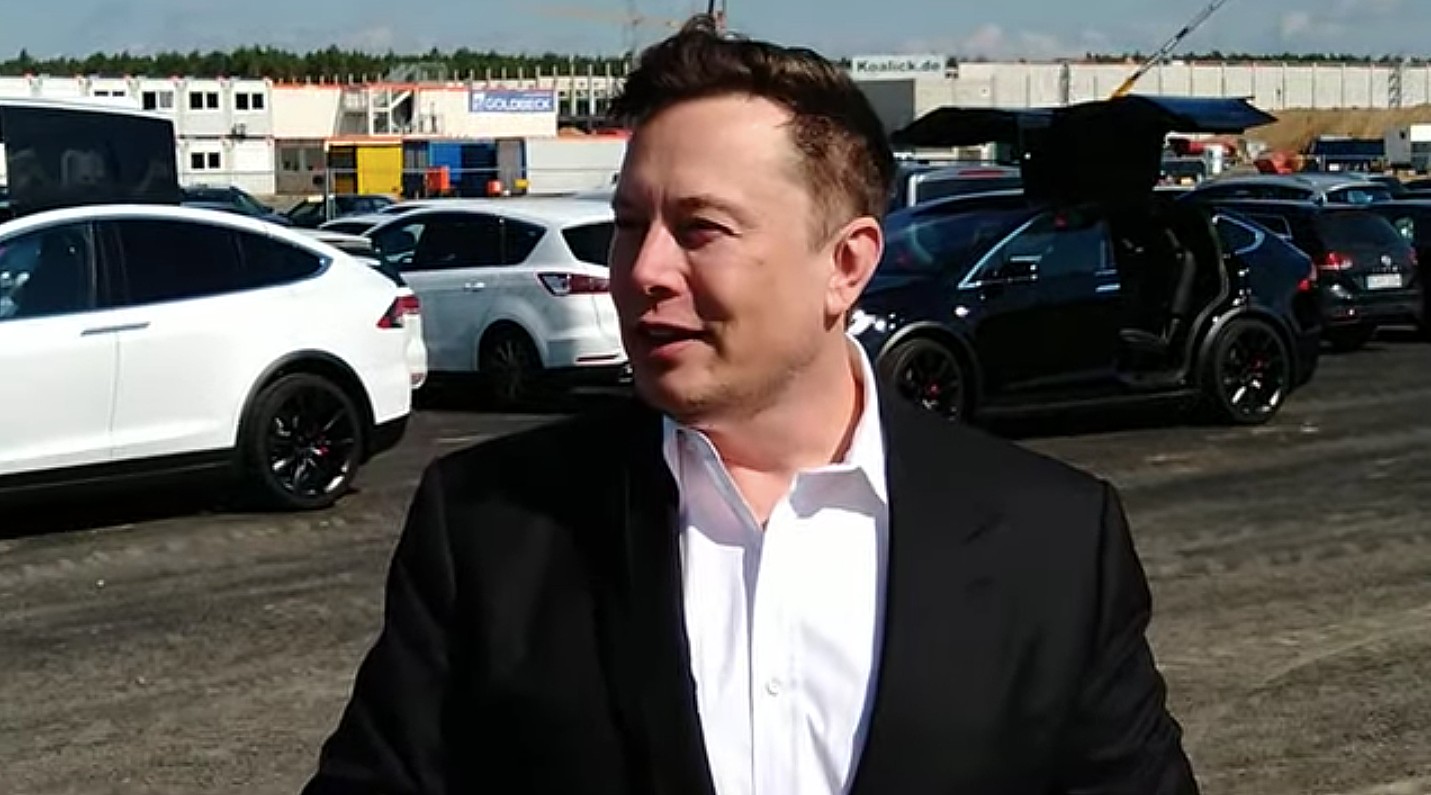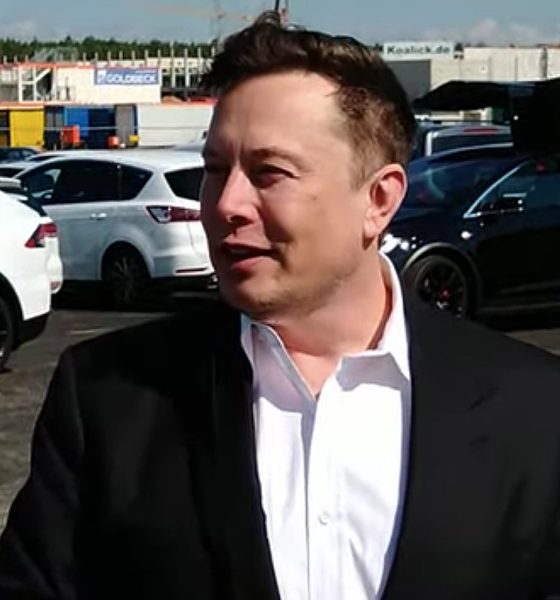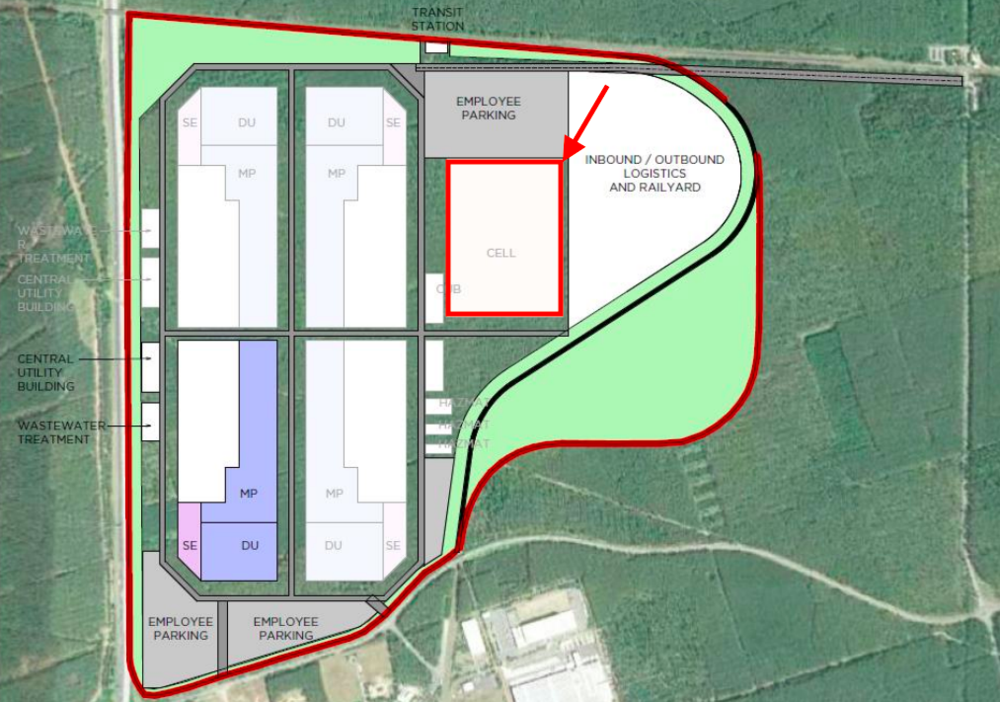

News
Elon Musk shares details on Tesla Model Y redesign, battery cell production in Giga Berlin
One of the most notable moments in Tesla CEO Elon Musk’s visit to the Gigafactory Berlin complex was an impromptu interview with several members of the media. Musk discussed numerous topics in his 9-minute interview, from the quick buildout of Giga Berlin, the upcoming facility’s next-generation paint shop, and why it is pertinent for the German electric vehicle factory to be constructed as soon as possible. But beyond this, Musk also shared details about a couple of pertinent initiatives that will be rolled out in Gigafactory Berlin: the Model Y redesign and local battery cell production.
Based on Musk’s comments, it appears that Giga Berlin is poised to be Tesla’s most advanced factory yet. After candidly admitting that the vehicles from the German plant will likely have better paint than those produced in the United States, Musk noted that the Made-in-Germany Model Y will also be undergoing a radical redesign. Musk stated that some of these updates to the Model Y will be discussed during Battery Day. Following is Musk’s statement as transcribed by Tesla bull and enthusiast James Stephenson.
“Like I was saying, you know, we build the factory and then also there’s a bunch of innovative stuff that we will be doing here that we will tell you about in the future… It’s not just a copy of the Model Y. It’s actually a radical redesign of the core technology of building a car. And some of this, when I do Battery Day in September, I’ll be talking about what we are going to be doing here in Berlin. But it will be the first time there’s going to be a transformation in the core structural design of the vehicle. It’s quite, quite a big thing,” Musk remarked.

Apart from providing new details about the Model Y redesign, Musk also confirmed that Tesla is looking to produce battery cells in the Gigafactory Berlin complex. The Tesla CEO shared this detail while explaining why there is such a rush to get Giga Berlin online as soon as possible. According to Musk, it is pertinent to move fast because of Tesla’s mission, which is to accelerate the advent of sustainable energy. Ultimately, Musk noted that for the sake of the climate, companies like Tesla must move as fast as they can.
“I believe in speed. And I think also, well, to be serious for a second, I think it’s very important for our climate that we move quickly. It matters. I think it’s very important that we accelerate the transition to sustainable energy and that we move as quickly as possible. So this is the reason for the sense of urgency… And I’ve been saying this for a long time. It’s good to see some companies like VW taking this seriously now, but still only a very small percentage of cars that are made are electric.
“And then I think we will probably do more than cars here. I think we will provably be building some battery cells here. I think that’ll be good for stationary storage of wind and solar. Essentially, the three elements that are necessary for a sustainable energy future are energy generation, energy storage, and electric transportation — electric cars, and eventually, electric aircraft. Ironically, everything will go electric except rockets,” Musk said.
Interestingly enough, initial plans for Gigafactory Berlin actually had large areas of the site allotted for a battery cell facility. With this in mind, it appears that Tesla has been pondering local battery cell production for Giga Berlin for some time now. Perhaps the bigger question now is if the company will be utilizing a partner for the Berlin site, similar to its strategy with Panasonic in Gigafactory Nevada, or if Tesla will operate its own custom battery cell lines, similar to the “Roadrunner” project in Fremont.
Watch Elon Musk’s full interview at Gigafactory Berlin in the video below.
H/T James Stephenson.

Elon Musk
Elon Musk and Tesla AI Director share insights after empty driver seat Robotaxi rides
The executives’ unoccupied tests hint at the rapid progress of Tesla’s unsupervised Robotaxi efforts.

Tesla CEO Elon Musk and AI Director Ashok Elluswamy celebrated Christmas Eve by sharing personal experiences with Robotaxi vehicles that had no safety monitor or occupant in the driver’s seat. Musk described the system’s “perfect driving” around Austin, while Elluswamy posted video from the back seat, calling it “an amazing experience.”
The executives’ unoccupied tests hint at the rapid progress of Tesla’s unsupervised Robotaxi efforts.
Elon and Ashok’s firsthand Robotaxi insights
Prior to Musk and the Tesla AI Director’s posts, sightings of unmanned Teslas navigating public roads were widely shared on social media. One such vehicle was spotted in Austin, Texas, which Elon Musk acknowleged by stating that “Testing is underway with no occupants in the car.”
Based on his Christmas Eve post, Musk seemed to have tested an unmanned Tesla himself. “A Tesla with no safety monitor in the car and me sitting in the passenger seat took me all around Austin on Sunday with perfect driving,” Musk wrote in his post.
Elluswamy responded with a 2-minute video showing himself in the rear of an unmanned Tesla. The video featured the vehicle’s empty front seats, as well as its smooth handling through real-world traffic. He captioned his video with the words, “It’s an amazing experience!”
Towards Unsupervised operations
During an xAI Hackathon earlier this month, Elon Musk mentioned that Tesla owed be removing Safety Monitors from its Robotaxis in Austin in just three weeks. “Unsupervised is pretty much solved at this point. So there will be Tesla Robotaxis operating in Austin with no one in them. Not even anyone in the passenger seat in about three weeks,” he said. Musk echoed similar estimates at the 2025 Annual Shareholder Meeting and the Q3 2025 earnings call.
Considering the insights that were posted Musk and Elluswamy, it does appear that Tesla is working hard towards operating its Robotaxis with no safety monitors. This is quite impressive considering that the service was launched just earlier this year.
Elon Musk
Starlink passes 9 million active customers just weeks after hitting 8 million
The milestone highlights the accelerating growth of Starlink, which has now been adding over 20,000 new users per day.

SpaceX’s Starlink satellite internet service has continued its rapid global expansion, surpassing 9 million active customers just weeks after crossing the 8 million mark.
The milestone highlights the accelerating growth of Starlink, which has now been adding over 20,000 new users per day.
9 million customers
In a post on X, SpaceX stated that Starlink now serves over 9 million active users across 155 countries, territories, and markets. The company reached 8 million customers in early November, meaning it added roughly 1 million subscribers in under seven weeks, or about 21,275 new users on average per day.
“Starlink is connecting more than 9M active customers with high-speed internet across 155 countries, territories, and many other markets,” Starlink wrote in a post on its official X account. SpaceX President Gwynne Shotwell also celebrated the milestone on X. “A huge thank you to all of our customers and congrats to the Starlink team for such an incredible product,” she wrote.
That growth rate reflects both rising demand for broadband in underserved regions and Starlink’s expanding satellite constellation, which now includes more than 9,000 low-Earth-orbit satellites designed to deliver high-speed, low-latency internet worldwide.
Starlink’s momentum
Starlink’s momentum has been building up. SpaceX reported 4.6 million Starlink customers in December 2024, followed by 7 million by August 2025, and 8 million customers in November. Independent data also suggests Starlink usage is rising sharply, with Cloudflare reporting that global web traffic from Starlink users more than doubled in 2025, as noted in an Insider report.
Starlink’s momentum is increasingly tied to SpaceX’s broader financial outlook. Elon Musk has said the satellite network is “by far” the company’s largest revenue driver, and reports suggest SpaceX may be positioning itself for an initial public offering as soon as next year, with valuations estimated as high as $1.5 trillion. Musk has also suggested in the past that Starlink could have its own IPO in the future.
News
NVIDIA Director of Robotics: Tesla FSD v14 is the first AI to pass the “Physical Turing Test”
After testing FSD v14, Fan stated that his experience with FSD felt magical at first, but it soon started to feel like a routine.

NVIDIA Director of Robotics Jim Fan has praised Tesla’s Full Self-Driving (Supervised) v14 as the first AI to pass what he described as a “Physical Turing Test.”
After testing FSD v14, Fan stated that his experience with FSD felt magical at first, but it soon started to feel like a routine. And just like smartphones today, removing it now would “actively hurt.”
Jim Fan’s hands-on FSD v14 impressions
Fan, a leading researcher in embodied AI who is currently solving Physical AI at NVIDIA and spearheading the company’s Project GR00T initiative, noted that he actually was late to the Tesla game. He was, however, one of the first to try out FSD v14.
“I was very late to own a Tesla but among the earliest to try out FSD v14. It’s perhaps the first time I experience an AI that passes the Physical Turing Test: after a long day at work, you press a button, lay back, and couldn’t tell if a neural net or a human drove you home,” Fan wrote in a post on X.
Fan added: “Despite knowing exactly how robot learning works, I still find it magical watching the steering wheel turn by itself. First it feels surreal, next it becomes routine. Then, like the smartphone, taking it away actively hurts. This is how humanity gets rewired and glued to god-like technologies.”
The Physical Turing Test
The original Turing Test was conceived by Alan Turing in 1950, and it was aimed at determining if a machine could exhibit behavior that is equivalent to or indistinguishable from a human. By focusing on text-based conversations, the original Turing Test set a high bar for natural language processing and machine learning.
This test has been passed by today’s large language models. However, the capability to converse in a humanlike manner is a completely different challenge from performing real-world problem-solving or physical interactions. Thus, Fan introduced the Physical Turing Test, which challenges AI systems to demonstrate intelligence through physical actions.
Based on Fan’s comments, Tesla has demonstrated these intelligent physical actions with FSD v14. Elon Musk agreed with the NVIDIA executive, stating in a post on X that with FSD v14, “you can sense the sentience maturing.” Musk also praised Tesla AI, calling it the best “real-world AI” today.








